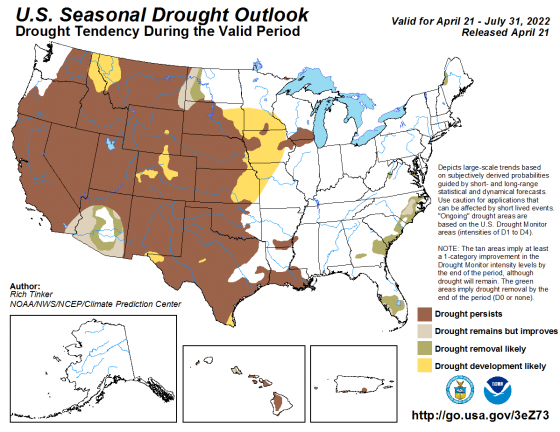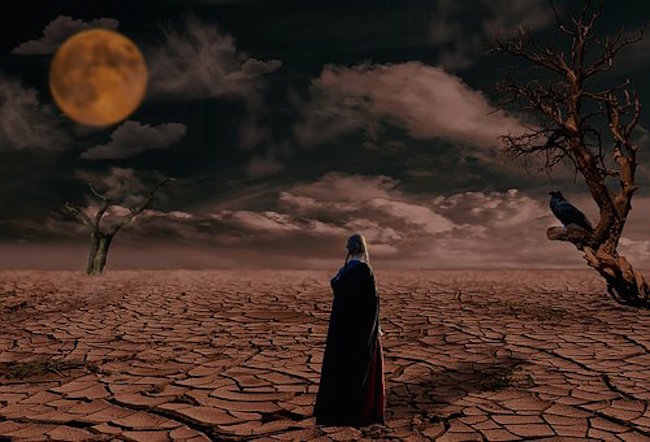On Top Of Everything Else, Drought, Drought And More Drought Is On The Way For The Western U.S. by for The Economic Collapse Blog

Are you ready for more bad news about our food supply? In recent weeks, I have extensively covered a confluence of factors which are combining to create a global food crisis of immense size and scope. But one thing that I haven’t written much about lately is the extraordinary drought in the western half of the United States. According to the official U.S. Seasonal Drought Outlook that was just released by the National Weather Service, nearly 50 percent of the continental United States will either see drought conditions persist or intensify in the coming months. This is really troubling news, because drought conditions are already having a dramatic impact on agricultural production.
At this point, the U.S. Department of Agriculture is telling us that just 32 percent of all winter wheat in the U.S. has either a “good” or an “excellent” rating…
Only 32 percent of the winter wheat crop in the United States received a “good” or “excellent” rating from the U.S. Department of Agriculture (USDA), new reports show.
While this represents a slight increase of two points compared to a week ago, the figure is far behind 2021’s 53 percent rating, illustrating just how bad America’s wheat crop is due to persistent drought conditions in many areas.
The reason why so much of our winter wheat is in such poor shape is because of the drought.
It just stretches on month after month, and many farmers in the western half of the country are beyond frustrated with the lack of moisture.
Of course a lack of moisture also creates ideal conditions for wildfires.
According to the National Interagency Fire Center, so far this year a total of 834,238 acres have burned in the United States.
Last year at this time, only 444,636 acres had burned.
And as I discussed yesterday, a lot of what has been burned within the past few days has been farmland.
Meanwhile, another “pestilence” has broken out on the other side of the globe. According to an Australian news source, an outbreak of Japanese encephalitis has already spread to more than 60 facilities that raise pigs…
The Department of Agriculture, Water and the Environment is reminding producers to remain vigilant as more than 60 piggeries across four states battle Japanese encephalitis (JEV) outbreaks.
And it turns out that three humans have died after contracting the disease…
Already this year, three people have died from the virus, and there are more than 60 piggeries with infected herds across New South Wales, Victoria, Queensland and South Australia.
That isn’t good.
As I have been covering in recent weeks, there are so many reasons why global food production will be way below expectations this year.
This will cause a tremendous shift in the equilibrium between supply and demand, and food prices will go way up. In fact, the World Bank is projecting that “there will be a staggering 37 percent rise in food costs”…
The US-based World Bank, which provides loans and grants to low and middle-income countries for capital projects, calculates there will be a staggering 37 percent rise in food costs. It said the effect will be ‘magnified for the poor’ who will have to ‘eat less’ and will be left with little money for anything else.
Needless to say, millions of people in the poorest countries of the world won’t have enough to eat at all.
U.S. Senator Roger Marshall recently warned that “a worldwide famine” is on the way, and he is not exaggerating one bit.
In other nations that are not so poor, extreme food inflation will cause a dramatic change in the standard of living. For example, just consider what is already happening in Argentina…




